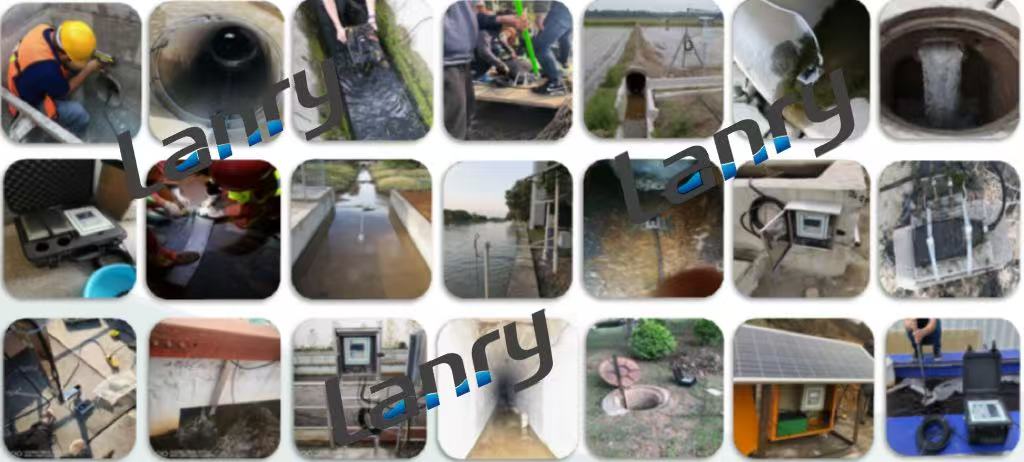Open channel flowmeters play a critical role in measuring water flow in non-pressurized systems such as rivers, irrigation canals, stormwater drains, and industrial wastewater channels. Their versatility and adaptability have made them indispensable across diverse geographical and industrial landscapes. Below are notable case studies highlighting their real-world applications worldwide.
1. Flood Management in the Netherlands: Doppler Radar Flowmeters
The Netherlands, a low-lying nation highly vulnerable to flooding, employs advanced Doppler radar flowmeters in its extensive network of rivers and canals. In the Rhine-Meuse delta, non-contact radar sensors (e.g., Teledyne RD Instruments’ FlowTrack II) are installed on bridges and embankments to measure real-time flow velocities during storm events. These meters provide critical data to flood forecasting models, enabling authorities to activate early warning systems and coordinate emergency responses. For example, during the 2021 European floods, radar flowmeters in the Maas River helped predict water levels with ±2% accuracy, allowing municipalities to evacuate high-risk areas proactively.
2. Irrigation Efficiency in Australia: Ultrasonic Open Channel Meters
In Australia’s arid agricultural regions, water scarcity demands precise irrigation management. The Murray-Darling Basin, a key food-producing area, utilizes ultrasonic open channel flowmeters (e.g., YSI’s 6600V2) paired with flumes to measure water distribution in irrigation channels. These meters, installed at weirs and canal junctions, monitor flow rates with ±1% accuracy, ensuring farmers adhere to water allocation quotas and minimize waste. For instance, a 2022 case study by the NSW Department of Primary Industries showed that ultrasonic meters reduced water misuse by 15% in cotton farms, optimizing crop yields while conserving a scarce resource.
3. Industrial Wastewater Monitoring in Germany: Electromagnetic Open Channel Meters
German manufacturing plants, committed to strict environmental regulations, rely on electromagnetic open channel flowmeters (e.g., Endress+Hauser’s Promag OC) to monitor wastewater discharge. At a major automotive factory in Bavaria, these meters are installed in concrete-lined channels to measure effluent flow rates and conductivity before treatment. The meters’ ability to handle high solids (e.g., metal shavings, oils) and provide real-time data to environmental agencies ensures compliance with the EU’s Water Framework Directive. In 2020, the system detected a sudden spike in contaminant levels, prompting immediate process adjustments and preventing a potential river pollution incident.
4. Urban Stormwater Management in the United States: Acoustic Doppler Velocity Meters
Cities like Los Angeles, prone to flash floods and urban runoff, use acoustic Doppler velocity (ADV) meters (e.g., SonTek’s Argonaut-X) in stormwater drains and retention basins. These portable devices, deployed during heavy rains, measure water velocity and depth in open channels with sub-millimeter precision. In 2023, the Los Angeles Bureau of Sanitation used ADV data to optimize the operation of flood control gates, reducing street flooding by 22% in high-risk neighborhoods. Additionally, the meters help assess pollutant loads in runoff, guiding targeted street sweeping and green infrastructure projects.
5. Hydropower Plant Efficiency in Brazil: Weir-Based Flowmeters
In Brazil’s Amazon region, hydroelectric dams like Belo Monte rely on weir-based open channel flowmeters to measure intake and spillway flows. Parshall flumes equipped with pressure transducers (e.g., Hach’s FPI-2000) are used to calculate discharge with ±3% accuracy, ensuring optimal turbine performance and environmental flow releases. A 2021 study by Eletrobras, Brazil’s national power company, showed that precise flow measurement reduced turbine downtime by 10%, increasing annual energy production by 50 GWh—enough to power 25,000 homes.
6. River Ecology Research in India: Laser Doppler Anemometry (LDA)
In the Ganges River, researchers from the Indian Institute of Technology (IIT) Kanpur use laser Doppler anemometry (LDA) to study turbulent flow patterns and sediment transport in open channels. LDA’s non-intrusive measurements help model how pollutants and nutrients disperse, informing conservation efforts for endangered species like the Ganges river dolphin. In a 2022 project, LDA data revealed that sand mining had altered flow velocities in critical spawning zones, prompting calls for stricter mining regulations.
Conclusion
From flood-prone deltas to arid farmlands, open channel flowmeters have proven essential for managing water resources, ensuring environmental compliance, and supporting industrial efficiency. These global case studies underscore their adaptability: Doppler radar for rapid flood response, ultrasonic sensors for water-scarce agriculture, and electromagnetic meters for industrial accountability. As climate change intensifies water management challenges, the precision and reliability of open channel flowmeters will only grow more vital in safeguarding ecosystems and human communities worldwide.

Post time: Apr-25-2025

